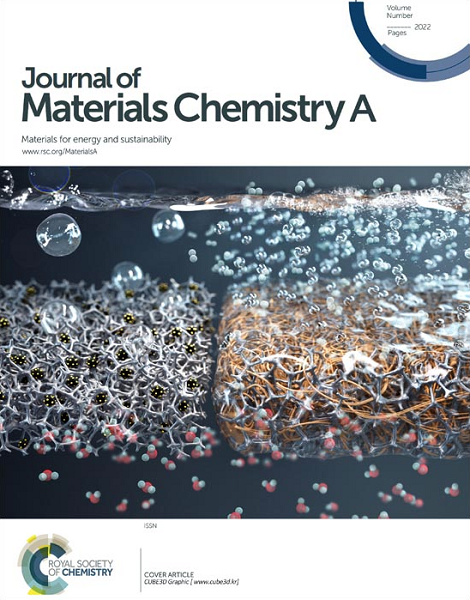合理设计促进低温水气转换反应中水解离和一氧化碳活化的活性位点
IF 9.5
2区 材料科学
Q1 CHEMISTRY, PHYSICAL
引用次数: 0
摘要
为了解决能源危机,人们对水气转换反应进行了深入而系统的研究,以有效地提供纯氢和自然脱除有害的一氧化碳。在典型的工业应用中,WGSR通常由两个单独的过程组成:高温移位反应(320-450°C)用于高反应速率,低温移位反应(150-300°C)由于其固有的热力学和动力学性质而用于高转化率。由于传统催化体系的复杂性,研究人员一直在努力寻求低温(<;300°C)反应催化剂具有更好的性能和能效。近年来的研究进展主要是基于低温WGSR催化剂组分与反应活性的相关性。然而,本工作考虑了不同的催化剂设计理念,以提高低温WGSR性能,基于两个半反应的组合:水解离和一氧化碳活化,发生在不同的活性位点。因此,只有对两个半反应有目的的活性位点设计,才能构成高效的催化剂。本文旨在总结近十年来的研究进展,并为今后的研究提供一些可能的设计方向。本文章由计算机程序翻译,如有差异,请以英文原文为准。
Reasonable active site design for promoting water dissociation and carbon monoxide activation in Low Temperature Water-Gas Shift Reaction
To solve the energy crisis, water-gas shift reaction (WGSR) has been deeply and systematically studied for effectively providing pure hydrogen and removing hazardous carbon monoxide spontaneously. In typical industrial applications, the WGSR commonly consists of two individual processes: high-temperature shift reaction (320-450°C) for high reaction rate and low-temperature shift reaction (150-300°C) for high conversion due to their intrinsic thermodynamic and kinetic properties. Owing to the complexity of traditional catalytic system, researchers have made great efforts to seek low-temperature (< 300°C) reaction catalysts with better performance and energy efficiency. Recent advancements are mainly based on the correlation of catalyst components and reactivities for low-temperature WGSR. However, this work considers different ideas of catalyst design for enhancing low-temperature WGSR performance based on the combination of two half-reactions: water dissociation and carbon monoxide activation, which occur on different active sites. Therefore, only purposeful active site design for the two half-reaction can constitute a efficient catalyst. This review goals to summarize the advances in the recent decade and provides some possible active site design direction for future investigation.
求助全文
通过发布文献求助,成功后即可免费获取论文全文。
去求助
来源期刊

Journal of Materials Chemistry A
CHEMISTRY, PHYSICAL-ENERGY & FUELS
CiteScore
19.50
自引率
5.00%
发文量
1892
审稿时长
1.5 months
期刊介绍:
The Journal of Materials Chemistry A, B & C covers a wide range of high-quality studies in the field of materials chemistry, with each section focusing on specific applications of the materials studied. Journal of Materials Chemistry A emphasizes applications in energy and sustainability, including topics such as artificial photosynthesis, batteries, and fuel cells. Journal of Materials Chemistry B focuses on applications in biology and medicine, while Journal of Materials Chemistry C covers applications in optical, magnetic, and electronic devices. Example topic areas within the scope of Journal of Materials Chemistry A include catalysis, green/sustainable materials, sensors, and water treatment, among others.
 求助内容:
求助内容: 应助结果提醒方式:
应助结果提醒方式:


